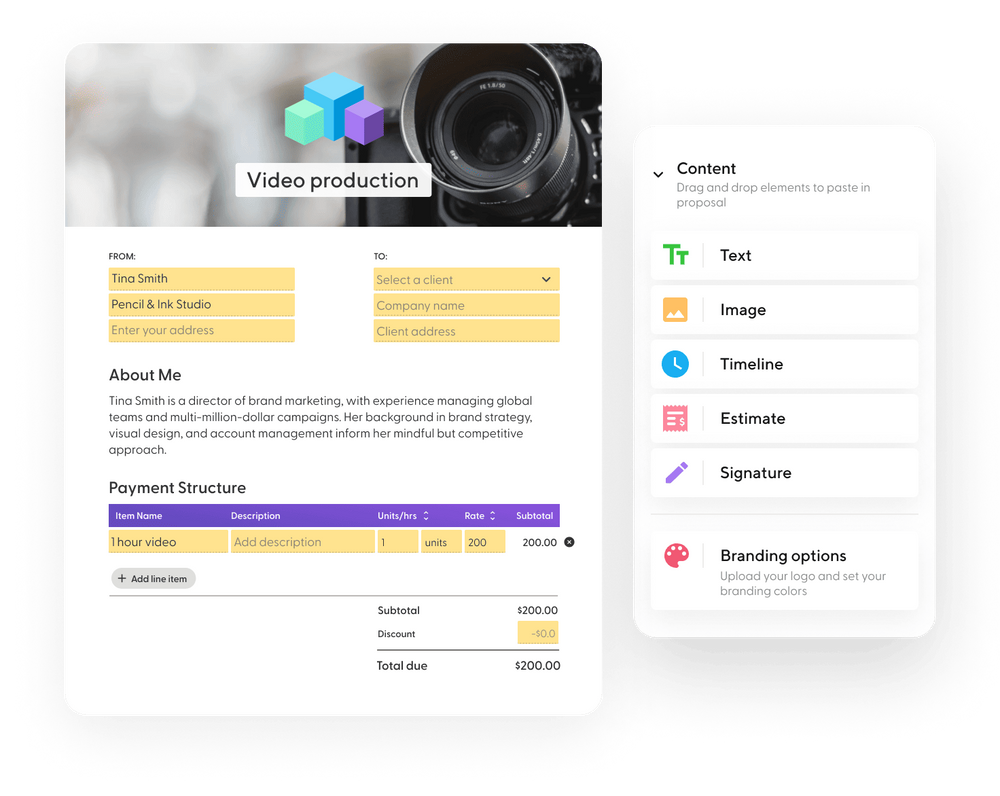Even brilliant ideas need to be able to sell themselves. And freelancers must continually sell their ideas in the form of proposals to obtain work and sustain their businesses.
Writing proposals is an art form—the concept must be clearly outlined, and the value of your work should get a potential client excited about pulling out their checkbook. But this is often where freelancers falter—we fail to put together an effective document, leading the recipient to skim through until moving on to the next email.
And while there’s no perfect formula, there are many things you can do to get closer to mastering the art of writing proposals. Check them out below.
1. Write a catchy subject line
First impressions are everything. What someone reads in the first few seconds will often determine whether they keep reading or not. And if you can’t get a potential client to open your email, you won’t be getting paid any time soon.
A standard subject line is a safe route to choose, and it will ensure you come across as professional. Always. But you can veer away from a stock subject line and still remain professional to better pique a client’s interest.
Consider this: Instead of making the subject line ‘Proposal for Company X’, try ‘My 5 Blog Ideas for Driving More Inbound Traffic to Your Website'.
Which email would you be more interested in opening?
2. Include an executive summary
Your proposal should include an intro section that summarizes your ideas and how you will solve one of the company’s problems. Without an introduction, the client won’t know what you’re selling, and might not be interested in going through a lengthy proposal without knowing if there’s value.
3. Boast (just a little!)
Have you written a blog post that got 5,000 shares? Or written an article for a big-name publication? Tell them. If there is a particular accomplishment that shows why you are worthy of being their next freelancer, they should know that.
But be careful about boasting too much. This proposal is still about them, not you. How can you solve their problems? A good way to keep the focus on the client but highlight your expertise is through an “About Me” section or with a link to your portfolio.
4. Be specific with the scope of work
What do you plan on delivering? Include a time frame, costs, and what they should expect from your style of work. Here are some things to consider putting in a freelance proposal:
- The quantity of work you plan on including
- Your rates/cost
- How you conduct your research (competitor research, keywords, audits, etc.)
- How you will measure success (specific KPIs, metrics, analytics, etc.)
5. Make it look nice
Stick with simple language (yes, even if you want to show off your writing skills). The document should be easy to read—nobody likes long blocks of text in 2020.
Keep it neat, organized, and skimmable. You want the reader to easily be able to break down sections and find the information they care most about.
6. Talk business
Clearly explain your operational guidelines and how you generally conduct business. It’ll ensure your appearance as a professional and show the client that you’re running a serious business. It’ll also allow them to identify whether or not you’re a good fit. Here are some questions to think about:
- How will you communicate with the client (email, Zoom meetings, Slack, etc.)?
- Do you have preferred hours of communication?
- What’s your revision policy?
- Do you require a deposit upfront?
- Will you meet for brainstorming sessions?
7. Follow up
If the client doesn’t respond immediately, that doesn’t mean it’s game over. Set yourself a reminder after an allotted amount of time (i.e. one week) to follow up with the client if you haven’t heard back. A friendly email will remind the client of your availability and give them an opportunity for questions.
Continue polishing your proposal skills
Writing a solid proposal can be a lot of work. But a bad proposal isn’t going to get you much work at all. Cater each proposal to the respective client. But be efficient—some work can always be reused (your “About Me” section, your work process, etc.). The more you write proposals the better you’ll get at it. Good luck!



